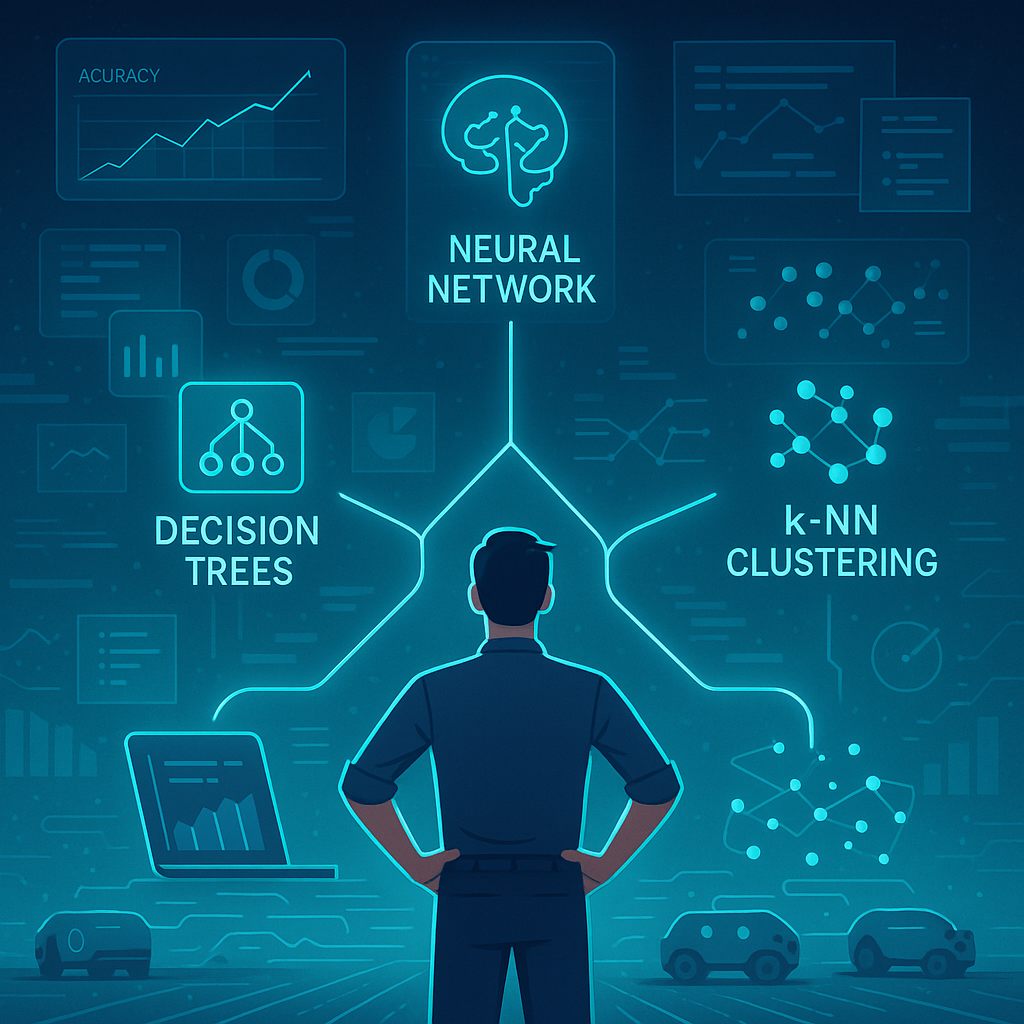Choosing the right machine learning algorithm can look like a daunting challenge. There are so many choices available – how do you know where to begin? The good news is that selecting an algorithm becomes more straightforward once you grasp a few key things about your data and your desired outcome.
🤔 What’s Your Goal?
Before you pick an algorithm ask yourself: What do I want to achieve? Your aim falls into one of these common types of tasks:
- Classification — Putting data into groups (e.g. spam vs. not spam)
- Regression — Guessing a number (e.g. home prices)
- Clustering — Grouping alike data together
- Dimensionality Reduction — Making data simpler with fewer features
Knowing what kind of problem you have will help you zero in on the right set of algorithms.
📊 How Much and What Type of Data Do You Have?
Your data has a big impact on the choice. Here are some quick tips:
- ✅ Got tons of data? Think about using deep learning such as neural networks — they tend to work well when trained on big datasets.
- ✅ Working with small datasets? Simpler models like Decision Trees, Logistic Regression, or Naive Bayes often perform better because they need fewer data to train.
- ✅ Dealing with images and video? Convolutional Neural Networks (CNNs) excel at handling this type of data.
- ✅ Have time-series data? Check out Recurrent Neural Networks (RNNs) or traditional models like ARIMA.
⏱️ Need a Quick or Lightweight Solution?
Some algorithms demand a lot of computing power and time to train. If you want fast results, try:
- Logistic Regression
- Decision Trees
- k-Nearest Neighbors
If you don’t mind training that takes longer and need solutions with more complexity, think about:
- Deep Learning
- Ensemble Methods (like Random Forests or Gradient Boosting)
🧪 Try Out a Few Choices
To find the algorithm that works best, test several models. You can:
- Divide your data into training and testing sets.
- Train different algorithms using the training set.
- See how accurate they are with the test set.
Tools such as scikit-learn make this job simple. Try out a few options, and pick the one that strikes the right balance between how well it performs and how fast it runs.
🔍 Remember to Consider Explainability
Accuracy isn’t the only thing that matters — you might need to explain how your model makes decisions. If this is crucial for you, stick with straightforward models like:
- Logistic Regression
- Decision Trees
More sophisticated algorithms such as deep learning or random forests can deliver better accuracy, but they can also seem like a “black box” that’s tough to figure out.
